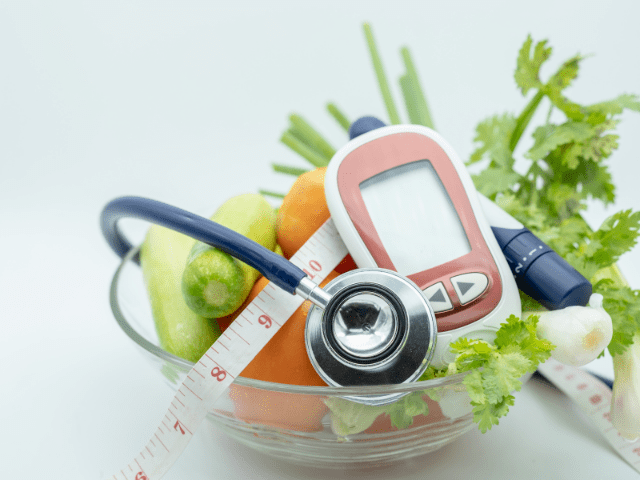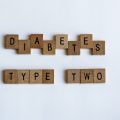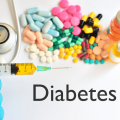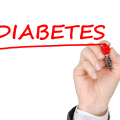Table of Contents
Type 2 diabetes once referred to as adult-onset diabetes; or non-insulin dependent diabetes is a chronic condition that affects your body’s ability to break down sugar (glucose); which is the most important source of fuel for your body. The condition causes your body to resist the effects of insulin; the hormone that enhances movement of sugar into your cells. It can also hinder the production of sufficient insulin in your body, leading to an imbalance in glucose levels. While type 2 diabetes is more prevalent in adults, it is now affecting children; especially with the increasing child obesity cases. There is no known cure, but you can control the symptoms by eating well, maintaining a healthy weight, and exercising. If you are not 100 percent sure if you have diabetes, you may want to check for these symptoms:
Increased urination and constant thirst
If you frequently need to urinate, you may be suffering from diabetes. Your kidneys are very active; and strive to eliminate all the extra glucose in your blood, thus the frequent urge to relieve yourself. The excessive thirst is an indication that your body is trying to regain the lost fluids. These two symptoms appear simultaneously and are two of the ways your body tries to manage high blood sugar.
Weight loss
Ridiculously high levels of blood sugar can also lead to rapid weight loss. This could be approximately 10-20 pounds over a period of 2 to 3 months, but not in a healthy way. Since the insulin hormone is not doing its work of moving glucose into your cells to be used as energy; your body thinks it is starving and triggers the breakdown of protein from your muscles as a secondary source of fuel. Moreover, the kidneys are also in full gear in a bid to get rid of excess sugar; leading to a loss of calories. Since both of these processes require a lot of energy, you end up creating a calorie deficit.
Hunger
Extreme hunger pangs are another symptom of diabetes that occurs; as a result of sharp peaks of highs and lows in your blood sugar levels. Your body naturally assumes it has not been fed once your blood sugar levels plummet; which makes it crave for the glucose necessary for the cells to function.
Skin problems
You may also experience itchy skin, perhaps due to poor circulation or dry skin. Acanthosis Nigricans is a skin condition associated with type 2 diabetes. It is a condition characterized by the darkening of the skin, around the armpit or neck area. If you have this condition, you may also have insulin resistance, even though your blood sugar might not be high.
Yeast infections
Experts consider diabetes an immune-suppressed state; which simply means heightened vulnerability to a variety of infections, the most common of them being yeast and other fungal infections. Both fungi and bacteria thrive in sugar-rich surroundings. Women, in particular, should keep an eye for vaginal candida infections.
Slow healing
Persistent cuts, bruises, and infections are a classic sign of diabetes. This is normally due to the excess glucose moving through the veins and arteries, ultimately damaging your blood vessels. This makes it difficult for blood to reach different parts of your body to facilitate healing.
Blurry vision
Seeing occasional flashes of light, floaters or having distorted vision are often directly linked to high levels of blood sugar. Blurry vision is caused by a refraction problem. High blood sugar levels tend to change the shape of the eye and lens. Fortunately, you can reverse this symptom once you get your blood sugar levels back to normal or near normal. On the other hand, neglecting to check your blood sugar levels for a long time will lead the glucose to cause permanent damage; perhaps even blindness, and that is irreversible.
Fatigue and irritability
People who have high blood sugar levels for a long time tend to get used to persistently not feeling well. This causes them to constantly visit their doctor. Getting up several times to go to the bathroom during the night is enough to make anyone weary; as well as the additional effort your body expends to recompense for its glucose deficiency. Irritability breeds from tiredness. It is not uncommon for people whose blood sugar levels have been really high to acknowledge; that they didn’t realize how bad they felt as soon as their blood sugar levels are brought down.
Tingling or numbness
Should you experience tingling or numbness in your hands and feet; followed by swelling or burning pain, this is a possible sign that your nerves are being attacked by diabetes. If the symptoms are recent, you may be able to reverse it. However, just like with vision, if you allow your blood sugar levels to be high for too long; neuropathy will be permanent.
Blood tests
You can also check for diabetes using several tests; but a single test result is not enough to diagnose the condition. The fasting plasma glucose test is one such test; which involves checking your blood sugar levels after 8 hours or a night of not eating. If two of these tests show that your blood glucose is above 126 mg/dL, it means you have diabetes. 99 mg/dL is the normal cutoff, while 100 to 125 mg/dL blood glucose is considered pre-diabetes.
What happens when you suspect that you are diabetic after noticing that you have some of the symptoms mentioned above? Well, the best way to go about that is to check your blood sugar levels to ensure that they are in check.






 I love to write medical education books. My books are written for everyone in an easy to read and understandable style.
I love to write medical education books. My books are written for everyone in an easy to read and understandable style.